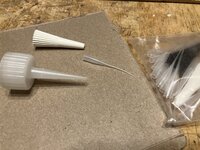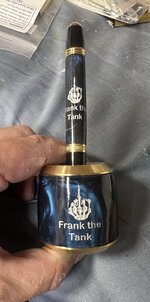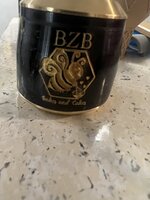I've been working on filling engravings since spring this year. In my case, I wasn't looking for just clear CA fill...I was looking to fill my engravings (which are often very fine, thin channels) with colored inlay of some kind.
This hasn't been easy. The problem I have had, including with CA, is that whatever I use to fill the engraving usually tends to wick into the wood grains.
I recently picked up GluBoost Fill 'n Finish Ultra Thin. My hope is that the ultra thin will penetrate the grain within and around the engraving, fully seal it, allowing me to use GluBoost with their Master Tint to color the glue for filling. I haven't actually tried this yet (ultra thin is brand new and I just received my bottle last night).
I was actually wondering how I'd fill the engraving, and the straw idea sounds like a nice option. I've also used cheap needles/pins to pick up the CA and push it into the engraving.
Another big challenge I've had is the fill not fully penetrating to the bottom of the engraved channels everywhere, then just getting pulled out during sanding or other later processing of the blank. Hoping that if I use GluBoost throughout, then I can just cover the CA filling the engraving with more coats of the same CA, and that will resolve the issue. I guess it depends on how smooth the infill comes out, and whether or not I feel it needs some leveling before I continue to add more coats. In any case, I've tried using epoxy, gel stains, milk paint, and CA direct on the wood, and none of that has worked so far. Always wicks into the grain, ruining the inlay.
I did try to seal the wood a few times, which works deeper in the engraving, but for any open grain wood, the infill would fill the open grain on the surface, which generally also ruins the inlay (I took a pin to try and clear the grains, that only goes so far). Hoping that some ultra thin GB to seal the grain throughout, then maybe a bit of careful work to seal any open surface grain, then fill the engraving, will work.
I would say, if your goal is simply to fill the engraving with clear CA, you can just do that with a thin CA while you are finishing normally. Just don't use accelerator on the first coat, let it soak in. On the second coat give it some time to sink into the engraving, then a light blast of accelerator. If you still need to fill, then either another coat of thin or medium should do. I just finished 15 pens with engravings using GluBoost. The thin (orange bottle) goes right into the engraving and I usually used two to three coats. Then the rest was blue, with a final coat or two of thin. Each engraving was filled just fine. ONE pen looked like it had just a tiny bit of air in a couple of the grains at the bottom of the engraving after I had polished the finish. I think that was the first pen I tried, and I don't think I waited long enough for the thin to really soak into the wood before I used accelerator.




